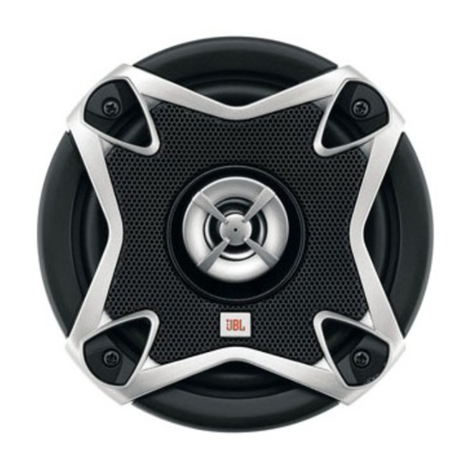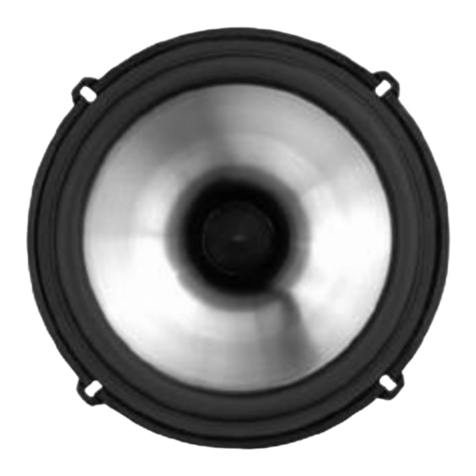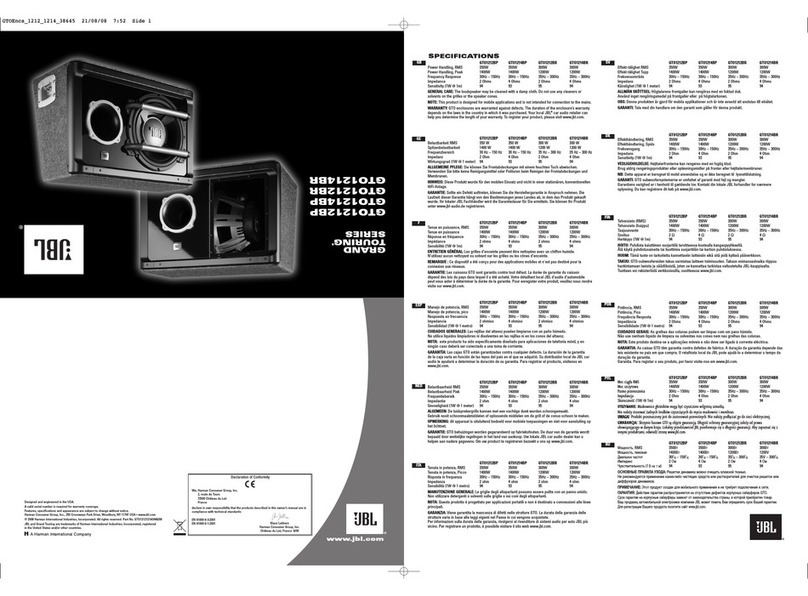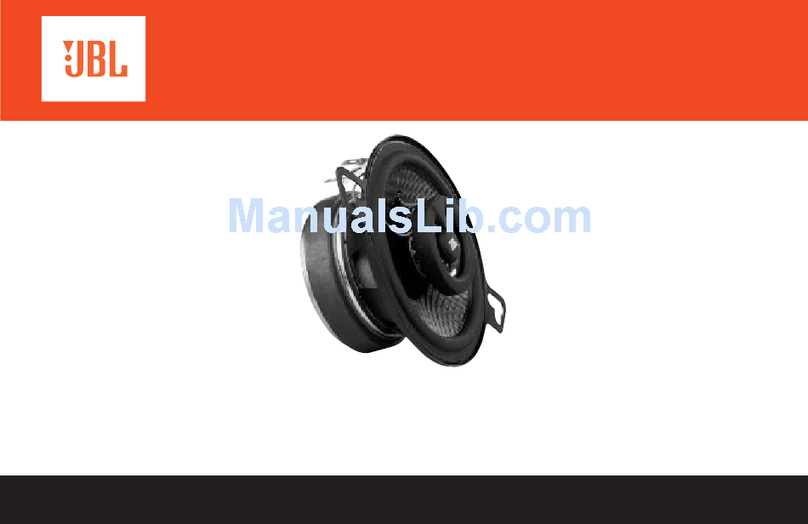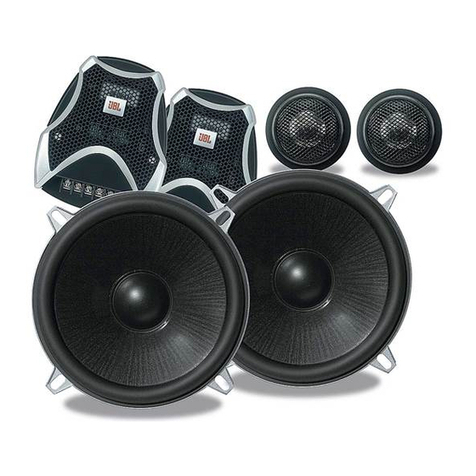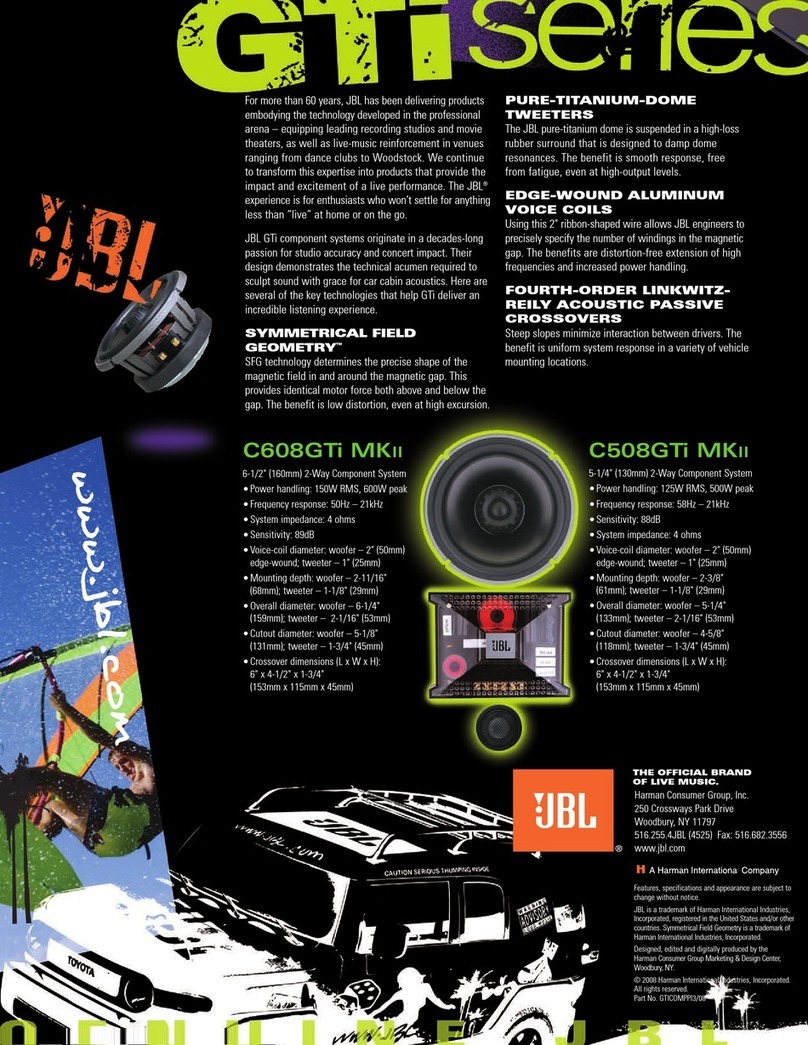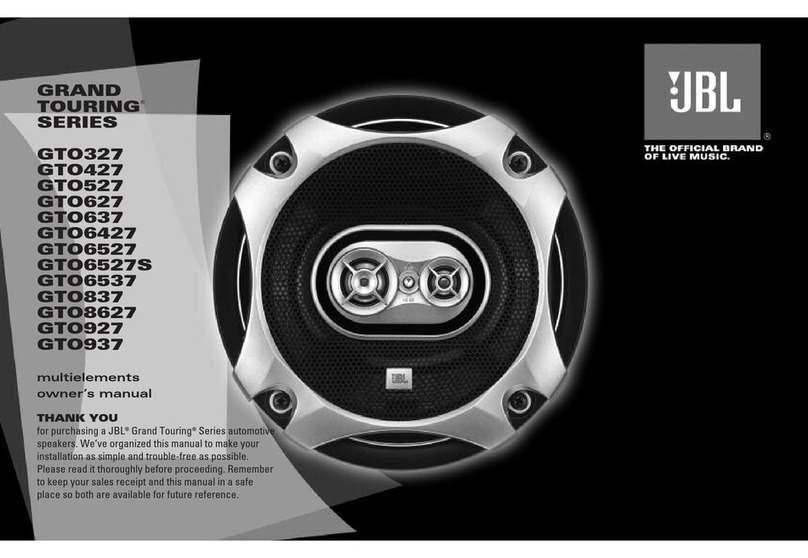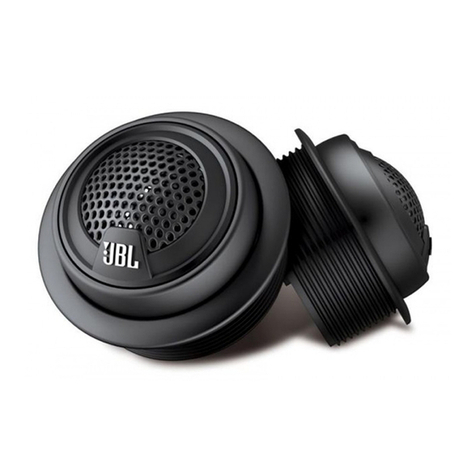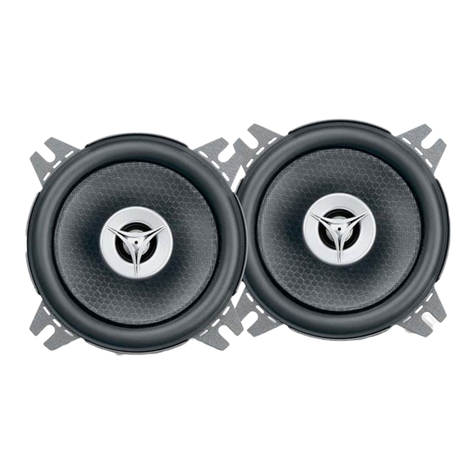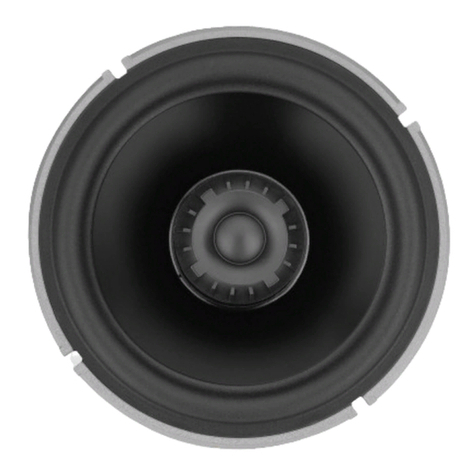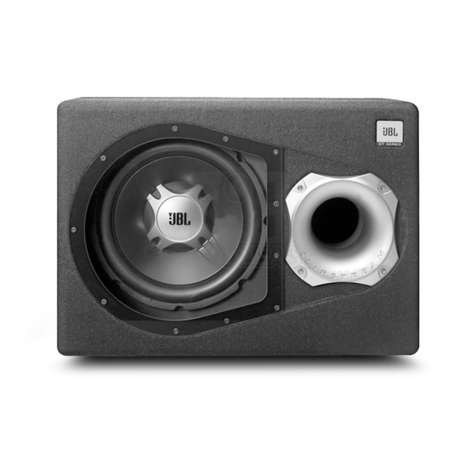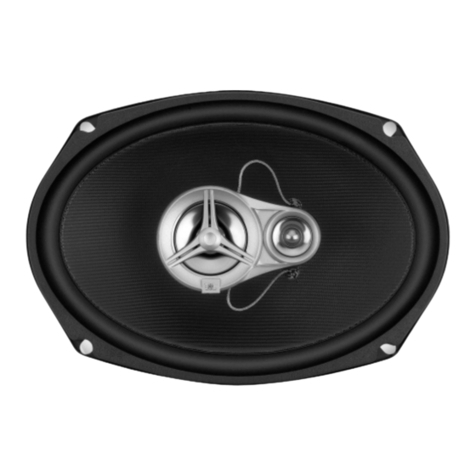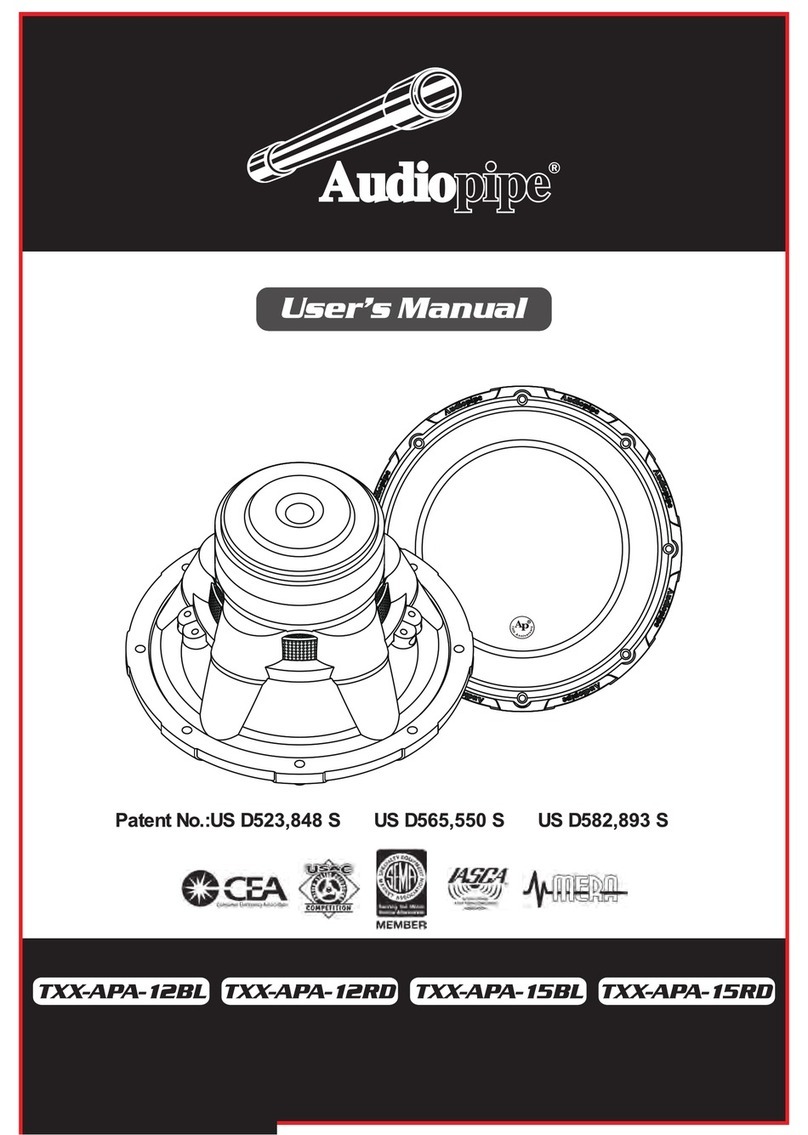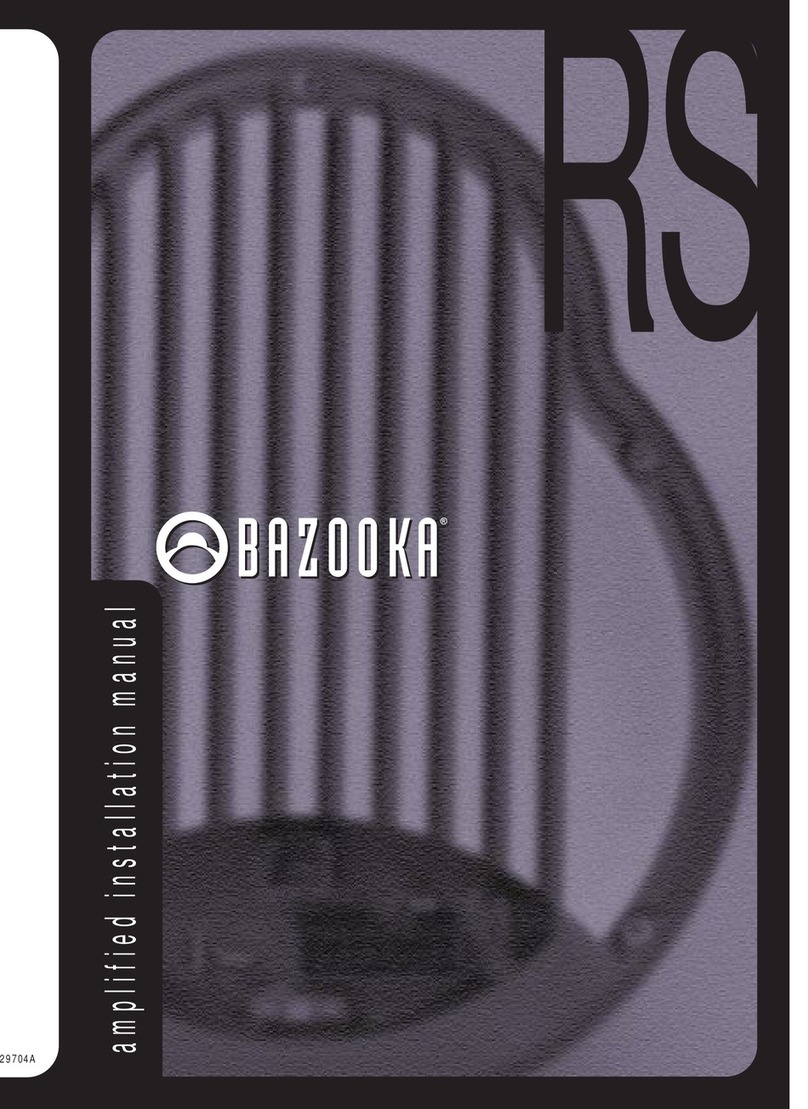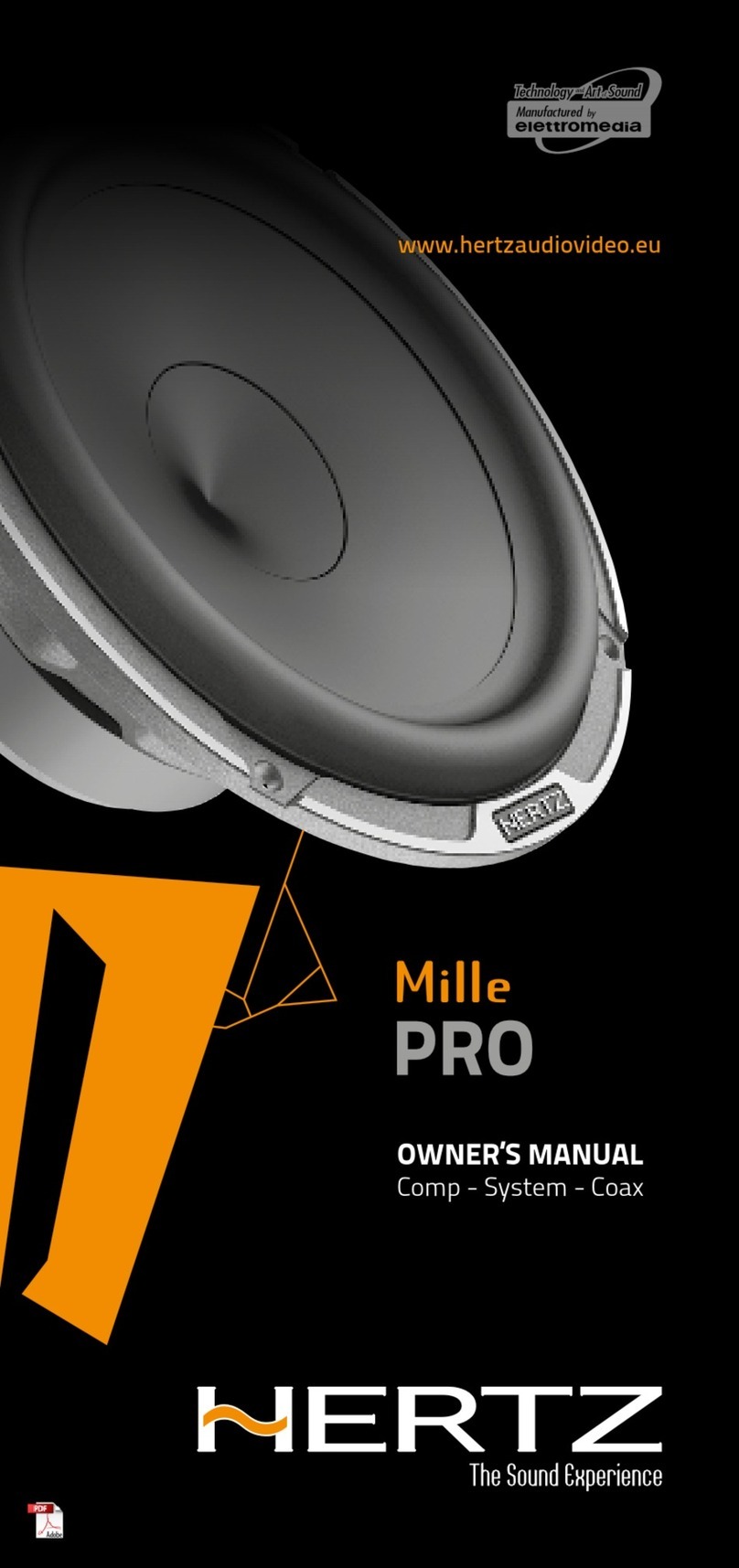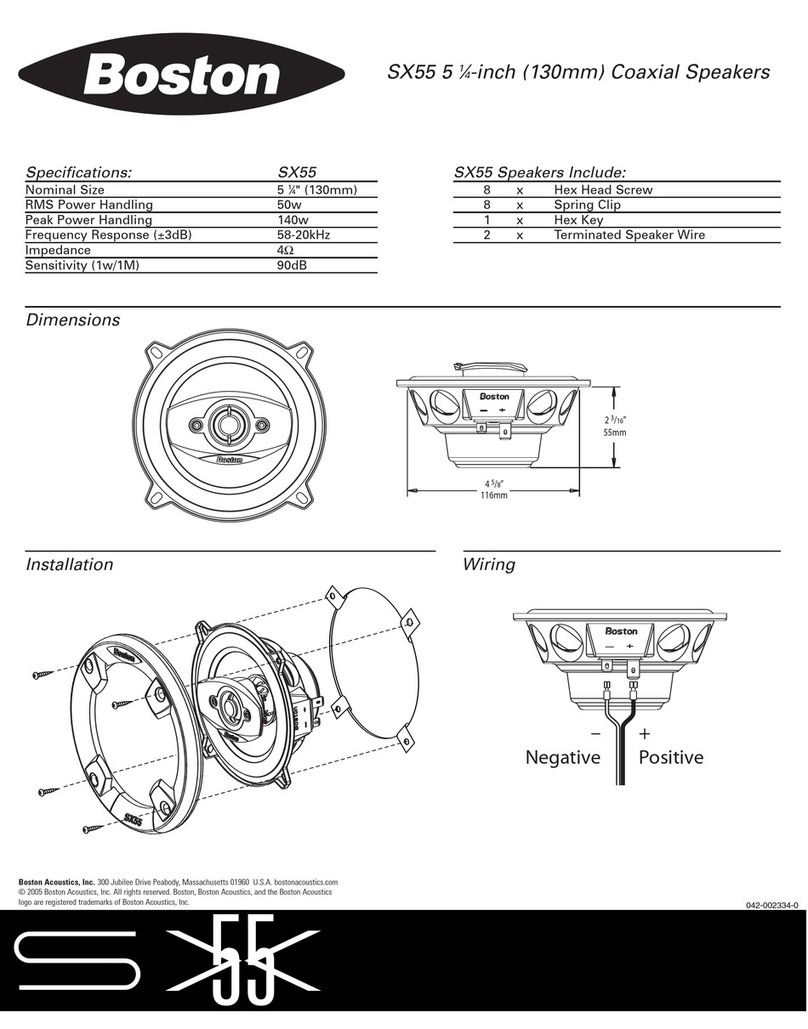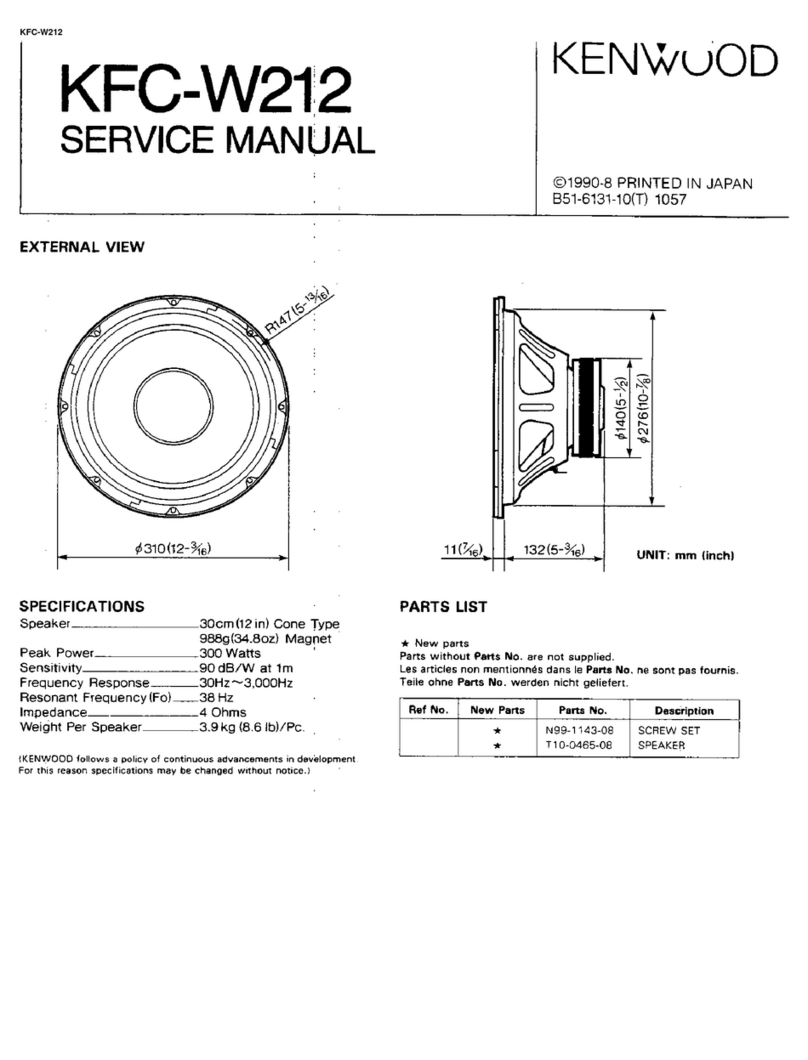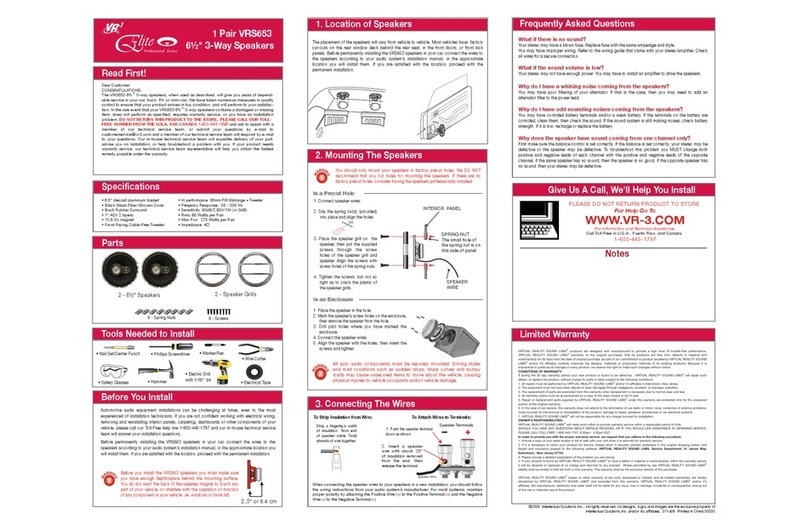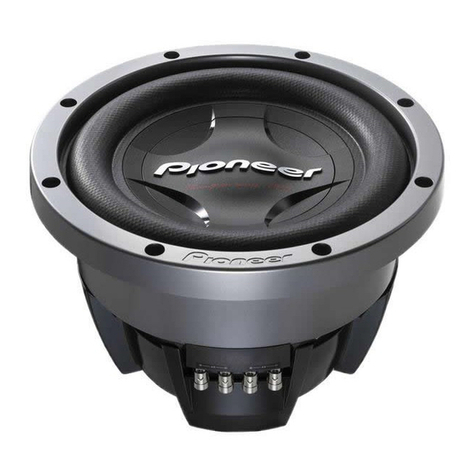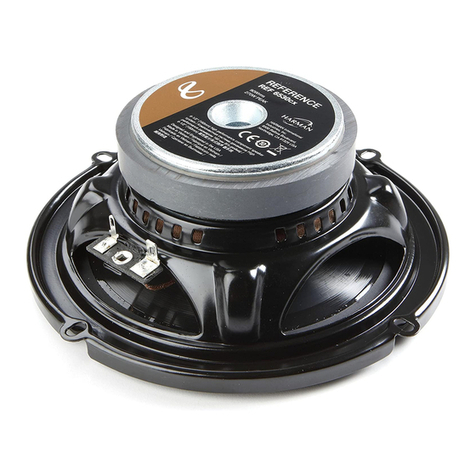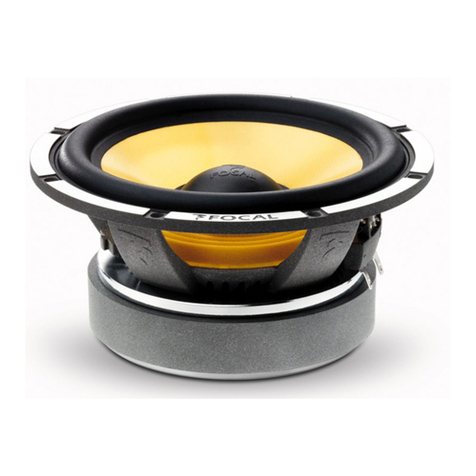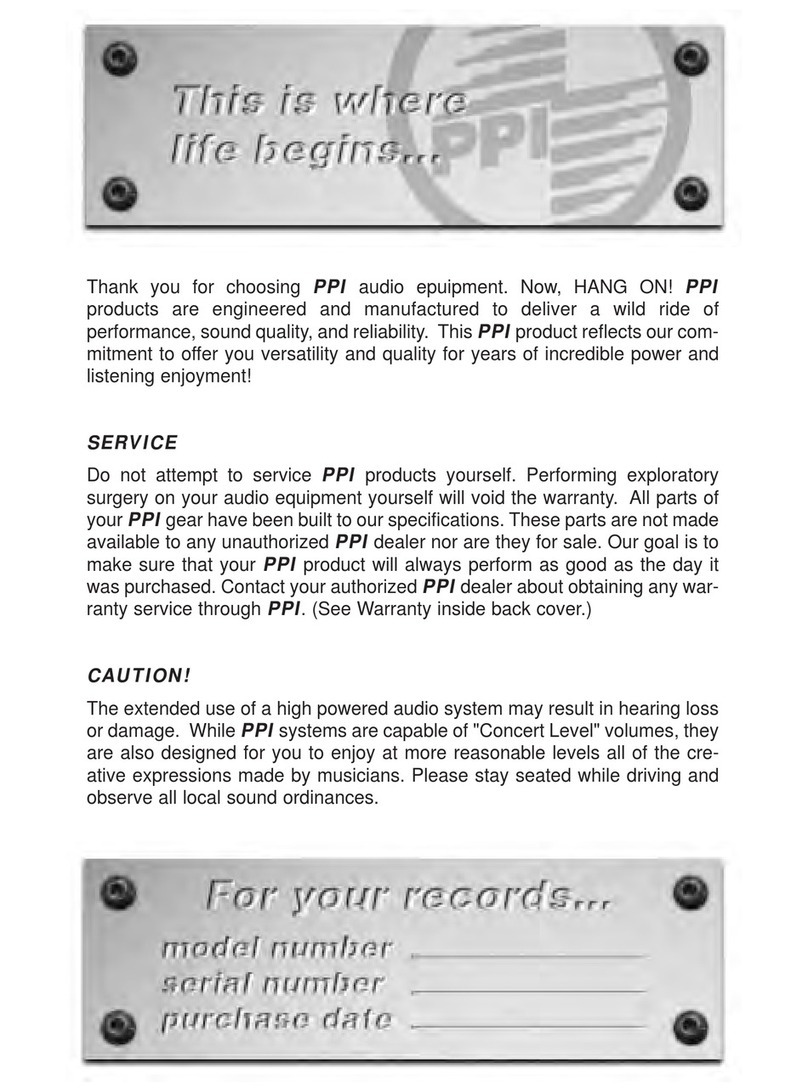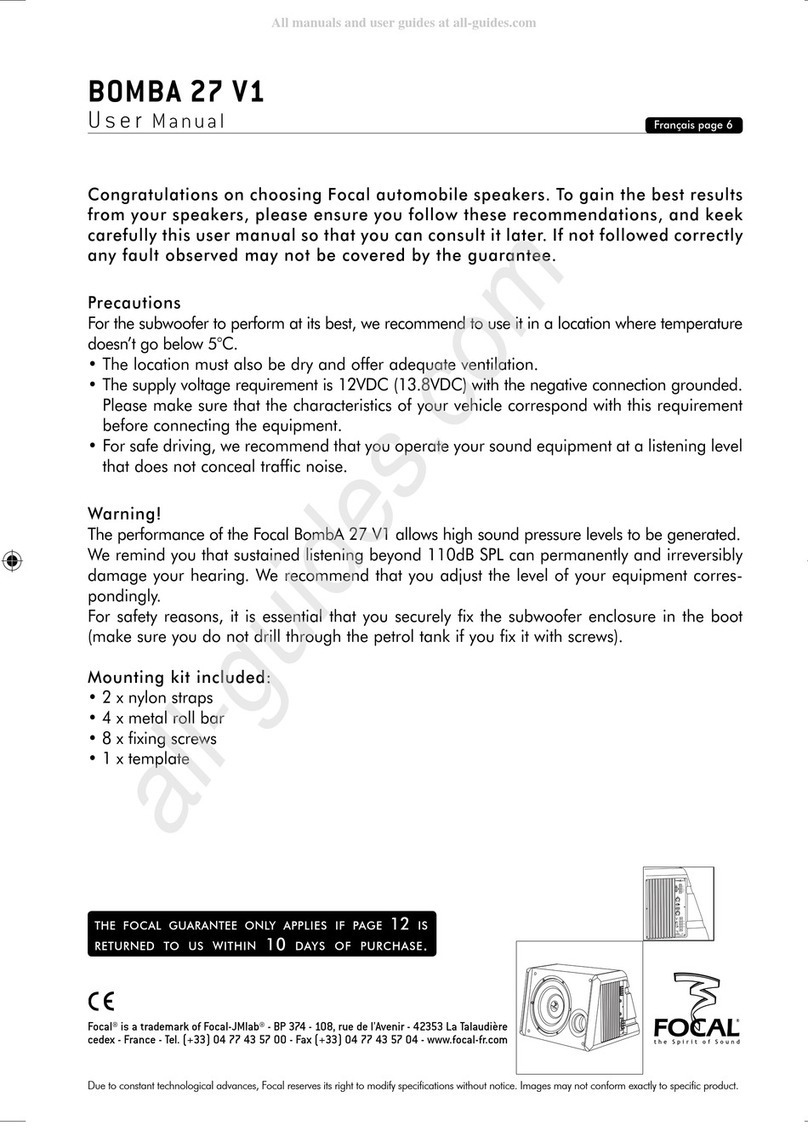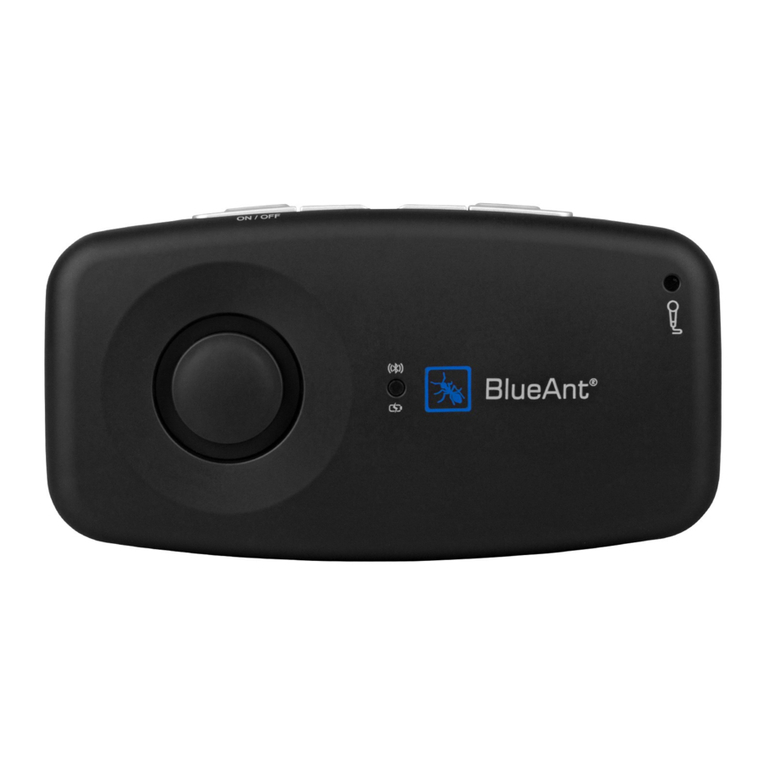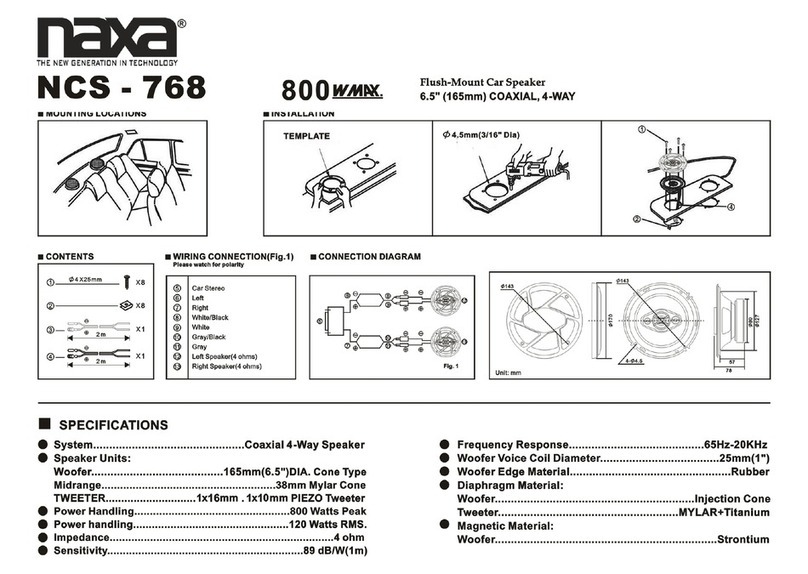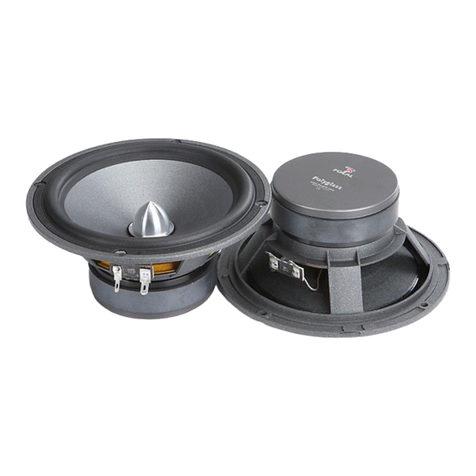
06
Installation Warnings
and Tips
• Be careful not to cut or drill into fuel
tanks, fuel lines, brake or hydraulic lines,
vacuum lines or electrical wiring when
working on your vehicle. Inspect behind
panels before you cut or drill.
• Make sure that the midwoofer will
physically fit in the mounting location. If
door mounting, check for adequate
clearance with the window in both
rolled-up and rolled-down positions as
well as for interference with window
crank and power window mechanism.
If mounting elsewhere, check for
clearance around rear deck torsion bars,
glove box or other structural elements.
• Do not mount speakers where water
may splash on the cones.
• Make sure that it will be easy to run
connecting wires to the speakers. Trace
speaker wire paths before you undertake
mounting.
• Always disconnect the ground wire
from the battery before doing any work
on the vehicle.
CAUTION: Fuel tanks are located
directly beneath the rear deck in
some cars. Check for adequate speaker
basket clearance before considering this
location!
A Note on Power Handling
As a result of their high efficiency, all JBL
loudspeakers will produce reasonable vol-
ume levels in the automotive environ-
ment using very little amplifier power.
However, the use of a small amplifier to
attain very high volume levels could lead
to over-driving the amplifier. This will
generate high distortion levels which can
easily damage loudspeakers, even if the
rated power of the amplifier is below the
rated maximum power handling of the
loudspeaker!
As a general rule, do not turn up the vol-
ume control past the point where you
hear distortion in the form of either signal
distortion from an overdriven amplifier or
mechanical noise from an overstressed
speaker.
For the best performance and system reli-
ability, you should select an amplifier
with an output rating greater than the
maximum power likely to be used to gen-
erate the desired volume levels.
If you want your system “Loud + Clear,”
we suggest that you step up to a JBL
power amplifier which has an RMS power
rating equal to, but not exceeding the
Maximum Recommended Amplifier
Power
listed in the specifications of your
specific JBL speaker. This margin of
reserve power will ensure that the ampli-
fier will not attempt to deliver more
power than its design allows. Your dealer
will be happy to point out which high
power JBL amplifiers are optimum for
your application and listening habits.
Following these guidelines will provide
virtually distortion-free sound reproduc-
tion and long loudspeaker life.
WARNING: Playing loud music over
120dB can permanently damage your
hearing. The maximum volume levels
achievable with JBL components and
high power amplification may exceed
safe levels for extended listening.
When listening at high volume levels,
always use hearing protection or turn
the volume down!
P-42c, 52c, 62c OM 7/14/98 11:32 AM Page 6
